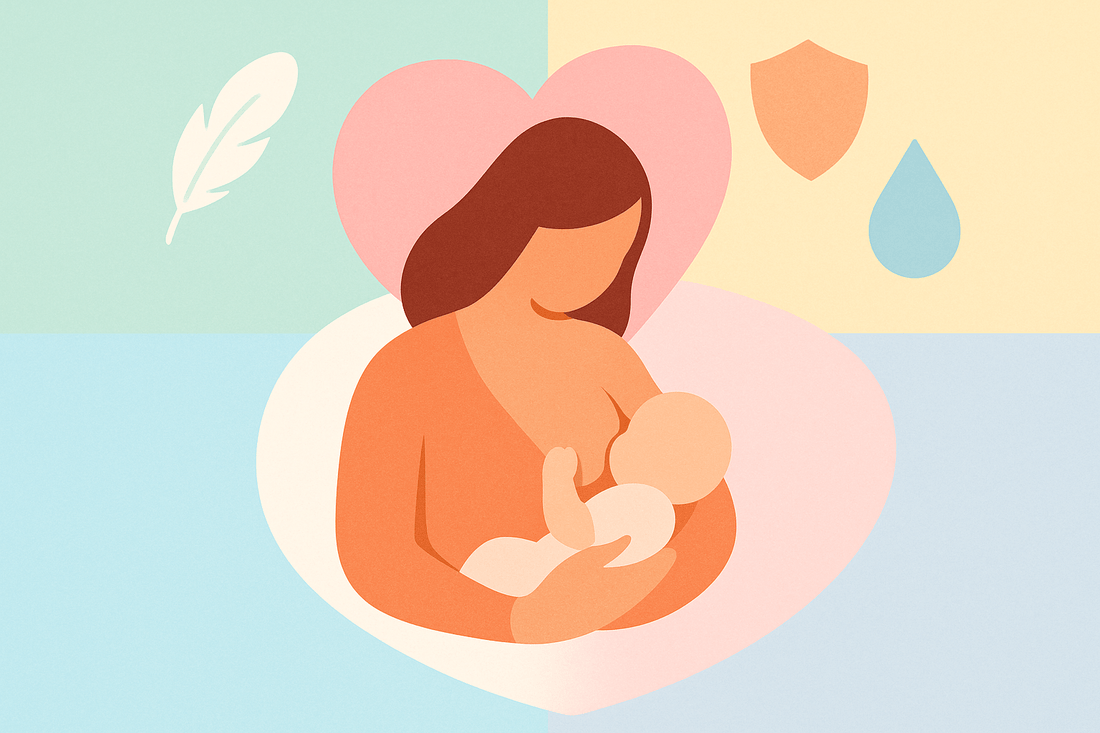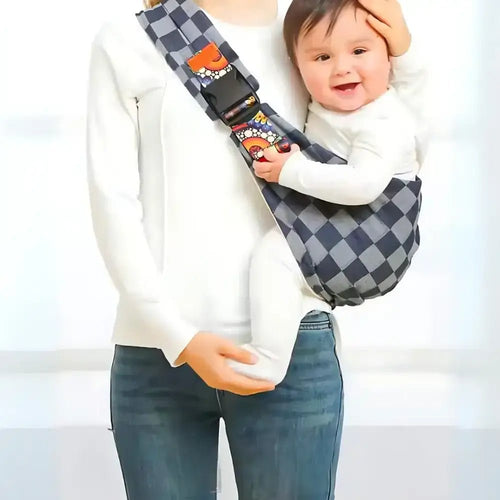
Happy Nipples: Expert Tips for Comfort and Care You Can Trust
Taking care of your nipples while breastfeeding really matters. Discomfort or pain can make feeding tough and, honestly, pretty stressful.
Keeping nipples healthy and pain-free helps both baby and parent have a better breastfeeding experience.
Simple tools and habits can protect sensitive skin and help prevent common problems like soreness and cracking. Starting with the right solutions early can save you time and spare you some headaches down the road.
This article shares practical tips and options for keeping nipple comfort on track during breastfeeding. Let’s walk through what works, what to try, and how to keep things as comfortable as possible.
Understanding why nipple care matters—plus how to handle issues—can really make a difference. We’ll dig into strategies for prevention and quick relief so your breastfeeding journey feels a bit smoother.
Key Takeways

- Nipple care boosts comfort and supports breastfeeding success.
- Practical solutions can help you avoid common nipple problems.
- Early attention to nipple health can reduce discomfort and complications.
Silver Nursing Cups
Silver nursing cups can help soothe and protect sore or cracked nipples during breastfeeding. They’re made from pure silver, which has natural healing properties.

Make sure you use them correctly and keep them clean for the best results and safety.
Product Benefits
Silver nursing cups are known for their natural antimicrobial, antifungal, and antibacterial effects. That means they can help lower your risk of infections and encourage healing if nipples get irritated.
They also help relieve pain and reduce inflammation. Silver’s anti-inflammatory properties soothe sensitive skin, and you don’t need to slather on creams or ointments.
Many breastfeeding parents find relief in those early weeks when nipple soreness is at its worst. These cups are lightweight and shaped to fit the breast, creating a moist, gentle barrier.
This helps nipples heal faster by preventing friction from clothing and keeping air from drying the skin out. Silver is durable and hypoallergenic, so most people don’t have to worry about skin irritation.
How To Use Silver Nursing Cups
Wear silver nursing cups inside your bra, right over the nipple. They should feel snug but not squish your breast.
Always clean and dry your nipples before putting the cups on. This keeps moisture from getting trapped.
Most parents wear them for about 15 to 30 minutes at a time, usually after feeding or pumping. That’s when healing matters most.
Don’t use the cups while nursing or pumping. Take them off before feeding and pop them back on afterwards.
Keep an eye on your skin’s reaction. If irritation or discomfort gets worse, it’s time to stop and check in with your provider.
A lot of moms find regular use during the first 2 to 3 weeks of breastfeeding works best, since that’s when soreness tends to peak.
Cleaning And Care Instructions

Silver nursing cups need gentle but thorough cleaning to keep their healing power and stay hygienic.
Rinse the cups with warm water after each use. If needed, use a mild soap.
Skip harsh chemicals and abrasive cleaning tools, since they can scratch or damage the silver. Dry the cups completely with a soft cloth before putting them away.
Any leftover moisture can cause tarnishing or even promote bacteria. Give them a shine with a silver cloth now and then to keep them looking and working their best.
Store the cups in a dry container or pouch, away from humidity. Regular cleaning stops buildup of oils or residue that could bother your skin or make the cups less effective.
Safety Guidelines
Silver nursing cups are generally safe when you use them as directed. Still, there are a few things to keep in mind.
Only use pure silver products made for nursing. Avoid anything with extra metals or mystery coatings.
Don’t wear the cups too tightly, since that can cause discomfort or mess with milk flow. The fit should be secure, not restrictive.
If you know you have a silver allergy or sensitive skin, check with your healthcare provider first. Never use silver nursing cups to replace medical treatment if you suspect infection or have severe nipple damage.
If pain sticks around or you notice anything unusual, reach out for professional advice. Follow the instructions on how long and how often to use the cups.
Check your nipples regularly to catch problems early. For more info, check out Silverette USA’s original silver nursing cups.
Happy Nipples
Happy Nipples can make breastfeeding a lot more comfortable. They protect sensitive skin, help with latch, and keep pain at bay during nursing.

Curious about silver nursing cups? Give them a try—risk free!
Their design and materials really matter for both support and safety. Using them properly and caring for them well means you’ll get the most out of them.
How Happy Nipples Support Nursing
Happy Nipples help reduce nipple pain and irritation. They act as a gentle barrier between your baby’s mouth and your skin.
This can be a lifesaver if you’re dealing with soreness or cracked nipples. Some moms say they make it possible to keep breastfeeding longer, without the pain.
They also help babies latch properly by giving them a consistent surface to suck on. That can improve milk flow and make feeding smoother, especially for babies who have trouble at first.
Materials And Design Features
Happy Nipples are usually made of medical-grade silver, silicone, or soft plastic. Silver is a favorite because it naturally resists bacteria and helps skin heal.
Lots of models, like Silverette, are thin and smooth, so they feel comfortable against your skin. Most cover just the nipple and areola, letting milk flow freely.
Some designs have tiny holes or slits to control milk flow. They’re lightweight and fit discreetly inside a bra or nursing pad.
All these features aim to protect you while keeping breastfeeding as natural as possible. FDA-registered devices meet safety standards for nursing aids.
Application Tips
Getting the fit right is key. Before using, make sure nipples and breasts are clean and dry.
Skip lotions or oils, since they can mess with suction. Put the nipple shield on so it covers the nipple fully but doesn’t feel too tight.
It should stay in place without slipping. During nursing, help your baby latch onto the shield just like they would your breast.
Sometimes it takes a couple of tries for your baby to get used to the new feel. Try not to use a nursing cup too often or for long stretches, since that can interfere with natural feeding.
If you’re unsure, a lactation consultant can help with fitting and tips.
Maintenance And Longevity
Clean happy nipples after every use with warm water and mild soap. Avoid harsh chemicals that can break down the material.
Sterilize them regularly, especially if they’re silicone or plastic. Some can be boiled or put in a steam sterilizer—always double-check the manufacturer’s instructions.
Store them in a clean container or their original case to keep dust and germs away. Before each use, look for cracks, discoloration, or any changes in texture.
If you spot anything off, replace the shield to keep things safe and comfy. Regular care means the device stays comfortable and hygienic for as long as you need it.
For more on these products, Silverette nursing cups are a great example of high-quality, FDA-registered options.
Curious about silver nursing cups? Give them a try—risk free!
Frequently Asked Questions
Nipple care means taking steps to ease pain, protect skin, and help healing. The right materials, a good diet, and protective gear all play a part in keeping nipples healthy while you’re breastfeeding or pumping.
How can one alleviate soreness in nipples post-breastfeeding?
Soreness usually comes from friction or a poor latch. Try using cool compresses after feeding to ease the pain.
A few drops of expressed breast milk, allowed to air dry on the nipple, can also soothe things. Make sure your baby’s latch is good to help prevent soreness next time.
What materials are considered safest for nipple creams and balms?
Natural ingredients like lanolin get recommended the most. Lanolin is safe for both you and your baby and helps lock in moisture.
Avoid creams with fragrances or chemicals that could irritate your skin or cause an allergic reaction.
Can dietary changes impact nipple health during breastfeeding?
Eating a balanced diet with plenty of vitamins A, C, and E can support skin health. Staying hydrated keeps your skin supple.
There’s no proof that specific foods prevent nipple pain, but good nutrition helps your body heal.
What are the recommended remedies for dry or cracked nipples?
Apply lanolin-based creams or a little expressed breast milk often to speed up healing. Letting nipples air dry after feeding helps avoid moisture buildup.
If cracks get worse or show signs of infection, reach out to your healthcare provider.
How do nursing pads contribute to nipple comfort and health?
Nursing pads soak up moisture and protect nipples from rubbing against clothing. Look for pads made from soft, breathable materials to cut down on irritation.
Change them often—whether they’re disposable or reusable—to keep bacteria away.
Are there any exercises or practices to relieve nipple discomfort after pumping?
Try gently massaging your nipples before and after pumping. This can boost blood flow and may ease some of that tenderness.
A warm compress works wonders, too. It helps relax the tissue and just feels soothing—sometimes, that's exactly what you need.
If pumping feels uncomfortable, check your pump settings. Lowering the suction a bit can make a big difference and help prevent pain from too much pressure.
For more tips on breastfeeding and nipple care, you might want to check out the CDC’s breastfeeding FAQs.
Still have questions about silver nursing cups or breastfeeding?
Visit our FAQs for quick answers

